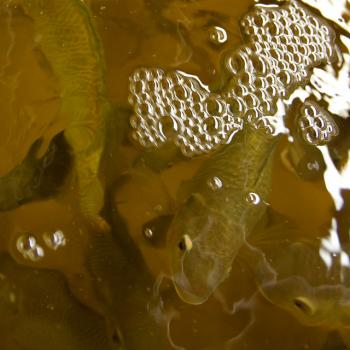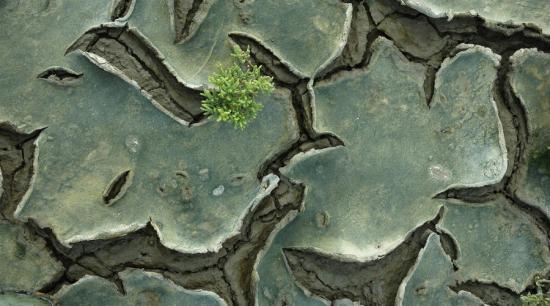 |
| Reviews and Templates for Expression We |
Do tilapia and mangroves hold secrets to desalination?

Image of mangroves by Kim Seng via flickr
Fresh drinking water isn't a supply problem, but I do believe there is an important supply solution.
This solution, desalination of seawater, in the future could be improved by techniques observed in nature. Here, I write about some notable examples in both the technological and natural world.
I question how this could possibly be called a supply problem. How can there be a scarcity issue with the world's most recyclable material? We are, after all, living on the "water" planet, where water flows in the hydrologic cycle. Water is continually falling to earth, being evaporated by the sun into water vapor, rising into the air as a gas and then condensing into liquid again as another round of rain, sleet or snow.
In between, water runs in rivers, sits in lakes, percolates through the soil, erodes mountains and, of course, sustains the living world. It has been doing this for a long time, and your last pitcher of lemonade might have been made with molecules that were once snow on the back of a wooly mammoth.
We have not stopped this cycle. Rather, we have dirtied its contents to unfitness while it is down here on earth and even up in the heavens. So, it is rather a water quality problem, and, I would add, a demand and distribution problem, not a supply one.
The solution to match the problem
So, if this is not a supply problem, then why do I support a supply solution? It seems we are better at developing new things than fixing the old. While I am no economic expert, perhaps there are more drivers for development of supply than conservation or remediation.
To be sure, increasing the supply should be coupled with increased conservation and more efficient recycling for a full range of remedies to this foundational crisis, but the projections for demand for water are compelling. The oceans offer the largest resource on the planet, so desalination seems to be the best choice for meeting this demand where most of humanity lives — near the coast.
Desalination comes in two basic flavors, distillation and reverse osmosis. Each is an approximation of processes that have been occurring in the natural world for billions of years, in our biosphere and in living organisms, including us.
Distillation is accomplished by heating water to the evaporation point and then condensing the resultant water vapor. In the process, minerals that were in solution are left behind and the condensed water is purified. This process happens on a grand scale in the hydrologic cycle already mentioned. Certain bodies of water in sundrenched locations, such as the Dead Sea, are evidence of this process.
Osmosis is the channeling of water through a semi-permeable membrane that blocks the minerals and impurities found in solution but allows the water through. In the natural world, the reliable tendency of material to flow from high concentrations to low is what powers this flow. Given the chance and time, therefore, water will flow toward the saltier side in a tendency to dilute it and the result will be equal concentrations of the minerals on both sides of the membrane.
To make fresh water, though, one wants to take the minerals out of the water, not spread them around, so we have learned to reverse the process and force water through a membrane to a side that stays free of them. This is reverse osmosis. Unlike the "surfing for free" model of nature, however, this takes a lot of energy, and in the development of this technique, reducing this cost is the name of the game. Current methods of desalination are about twice the energy cost of thermodynamic models from nature.
As in many sustainability realms, decisions require weighing the benefit of the procured material with the cost of the energy to produce it. For both techniques, it takes energy to either heat the water to evaporation (and chill to condensation) or to pump it through a membrane, and this is where the devil of details arrives. The goal for developers is to produce a low-cost filtration system that is scalable and durable. Cost reduction could come from low-energy processes, or by using extremely cheap energy.
Salt-slurping plants and osmotically gifted fish
In the intertidal coastal zones of the world, the dominant vegetation also comes in two varieties, salt marsh in the upper latitudes or mangrove swamps in the subtropical and tropical belt around the middle of the globe. Each regime has organisms highly adapted to taking the salt out of water and could point the way to improved technological methods. For example, the plant Salicornia in the salt marsh has adapted ways to concentrate salt into its tips that eventually wither and drop off, saving the rest of the plant.
The mangrove also has learned to convert salt water to fresh, and, depending on the species, may use one of two ways to cope with the brine.
Some mangroves use ultrafiltration of seawater in their roots, and like most plants, set up a vacuum of sorts within their stems to draw water from below. As leaves transpire water, a negative pressure is created of as much as 60 atmospheres, and the highly solute seawater is drawn through the membranes in the roots, following the natural path towards lower pressure. This is all powered by transpiration, where the plant maintains this gradient and runs the water through a purely physical sieve. Surfing for free.

Like Salicornia, other mangrove species have adapted to accumulate rather than completely exclude salts, and then to excrete them. This they do through microscopic glands in their leaves. First they filter water intake to about one-tenth the salinity of the seawater and then excrete the salt from this through the glands. The glands are dense factories of metabolic activity at the cellular level. While they are understood very little, they hold promise because they are so efficient at isolating the salt. At the National Environmental Research Institute of Singapore, researchers are studying this mechanism in hopes of improving current desalination techniques.
They are also studying the tilapia fish to process the salt in seawater. Tilapia are so-called euryhaline fishes, which live in both fresh and seawater. As such they have to regulate the osmotic pressures from two opposite regimes. A highly versatile osmoregulatory mechanism such as this could be very useful.
From the natural world to the business world
Singapore is a world leader in water processing, relying on a combination of rain catchment, wastewater recycling and desalination. Alternative sources of water were necessary for this city-state which famously fell to the Japanese in World War II because of a cut-off water supply from mainland Malaysia. Recycled wastewater successfully has been adopted, and was estimated in 2010 to be about half the energy cost to produce than desalination.
Desalination is an important component in Singapore's strategy, nonetheless, and the city continues to try to improve its efficiency. Recent use of electrodialysis, in which chloride and sodium ions are pulled out of water through a membrane using an electrical charge attraction, has resulted in significant cost savings. In 2011, officials estimated this process to be about one-fifth of the energy cost of distillation, and less than half the cost of reverse osmosis.
The prime minister of Singapore recently visited a product booth of a Danish company, Aquaporin, which employs another bio-inspired method that has desalination potential. The company makes filters of many types that mimic the bilipid membranes in your body. It gets its name from aquaporins, pore-forming proteins ubiquitous in living cells. While allowing high throughput of liquid, aquaporins are very effective at straining ions. This is also a low-energy filtration method, but a 2012 scientific assessment concluded that challenges remain before such filters can be durable, scalable and cost-effective enough to compete with reverse osmosis.
Finally, these bio-inspired process candidates eventually may have to compete with or include a relatively new material development in graphene, which a team at MIT successfully has punctured with holes at nano-scale to produce an effective filter that can pass water at many times the rate of conventional filters. Lockheed Martin is developing a commercial version, known as Perforene. Graphene is one of the most impermeable materials known and is extremely tough, so it is a good candidate for large-scale operations, but is still expensive to produce.
The race to the bottom of energy use when it comes to desalination is still very much on, and development will continue to focus on cost. Understanding the processes of nature will be key to breakthroughs, large and small.
|
|
|
|
Copyright 2011 Energy and Technical Services Ltd. All Rights Reserved. Energyts.com |
